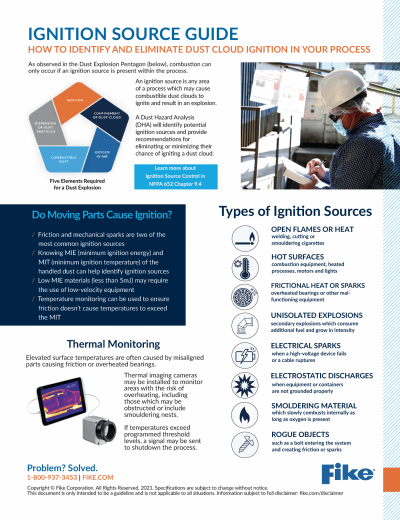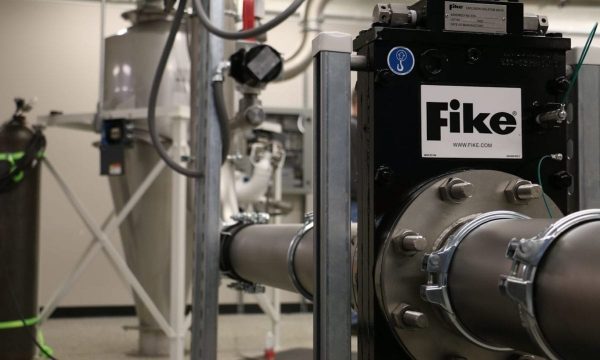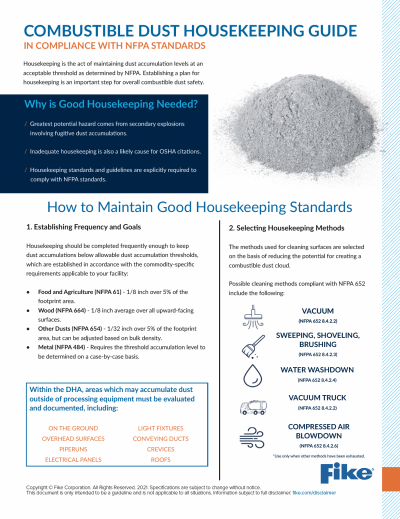CONDUCTING A DUST HAZARD ANALYSIS
Now that the necessary steps have been taken to prepare the Dust Hazard Analysis, it’s time to methodically complete the process of identifying problem areas and exploring possible solutions by following the steps below:
List of Equipment to Evaluate
By using a process flow diagram or touring the plant, all areas in which a hazard could occur (and cannot occur) is evaluated.
(visit section >)
Inspecting Equipment for Dust Hazards
Once the hazardous areas of the plant have been identified, the question of how an explosion or fire may occur in these areas must be answered.
(visit section >)
Identifying Credible Ignition Sources
Combustion cannot occur without an ignition source. By identifying these hazards, they may then be added into the action plan to prevent an explosion.
(visit section >)
Reviewing Existing Safeguards
It shouldn’t be assumed that installed safety systems will work as intended. These systems must be investigated to ensure their reliability.
(visit section>)
Inspecting Rooms and Buildings for Dust Hazards
(visit section >)
Developing a List of Equipment to Evaluate
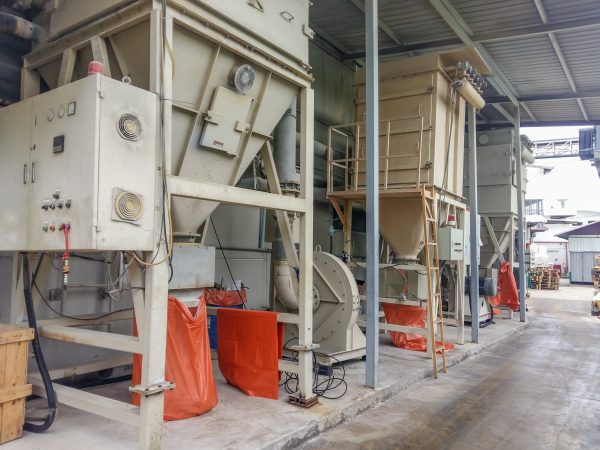
Inspecting Equipment for Dust Hazards
How might an explosion or fire occur within the process? To answer this question, the following must be determined:
- How is the material within the equipment being handled and conveyed?
- What are the explosibility characteristics of the material?
- Is there enough room to create a dust cloud?
- Could the equipment create or support conditions for an explosion or fire?
- Do solid materials exist which may not have the potential to explode but could catch fire?

Answers to these questions are often obtained from the internal team. For example, a team member such as a maintenance manager who periodically inspects a vessel or pipe should be able to disclose whether he or she finds dust clinging to the walls. An engineer can provide information for exactly how an area of the process is designed. Or a machine operator may be aware of a leak or upset in the process when it is turned on, and likely can describe the different states of the process.
Therefore, relying on institutional knowledge and documentation will usually provide enough information to understand where problem areas exist.
When necessary, certain tests may be required. For example, a particle size test can help determine how much dust separates from a material when it enters a specific part of the process, which of course will affect its combustibility.
Identifying Credible Ignition Sources
As observed in the dust explosion pentagon, combustion can only occur if an ignition source is present. Thus, identifying potential ignition sources throughout a process is imperative to not just the DHA but to the safety and overall understanding of the plant.
Possible ignition sources to identify and document include:
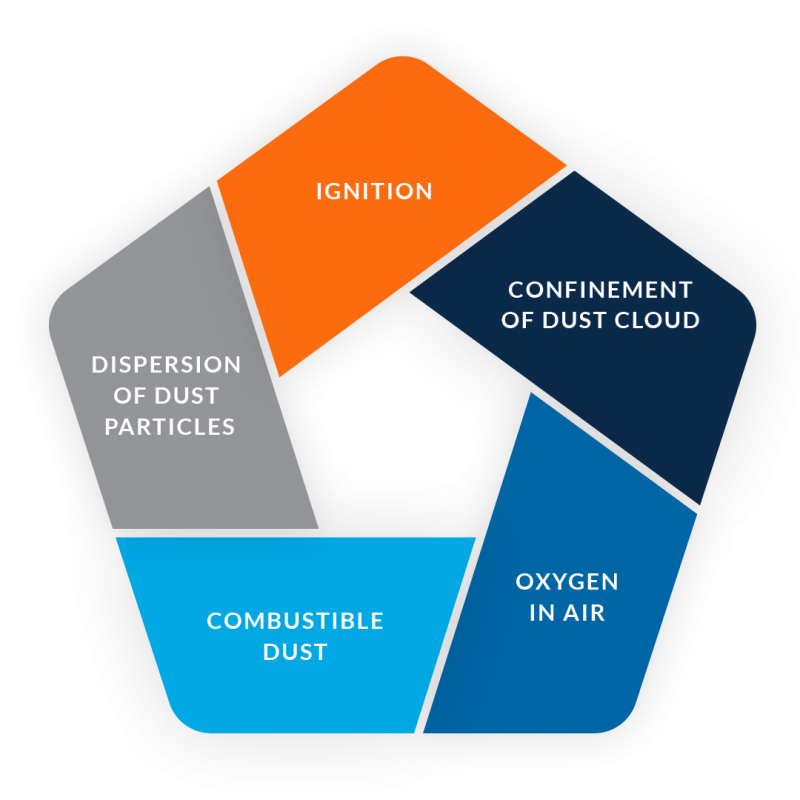
With so many types of ignition sources, it may initially seem difficult or even impossible to consider all the possible hazards. This is where the team’s institutional knowledge and documentation is invaluable to rule out certain possibilities.
For instance, if the handled dust has a minimum ignition energy (MIE) of more than 1 joule, most electrostatic discharges won’t have enough energy to ignite the dust. Therefore, electrostatic discharges might be removed from the list of possible ignition sources.
Reviewing the Safeguards
Safety systems which detect and eliminate ignition sources or protect against fires and explosions must also be evaluated to ensure they are being used properly and are still compliant with the latest codes and testing standards.
Safeguards that should be reviewed include:
Inspecting Rooms and Buildings for External Hazards
Dust hazards don’t only exist within process equipment, and the areas outside of the process must also be inspected for dust accumulation. In fact, some of the deadliest explosions occurred from the deflagration escaping from the process and igniting externally accumulated dust.
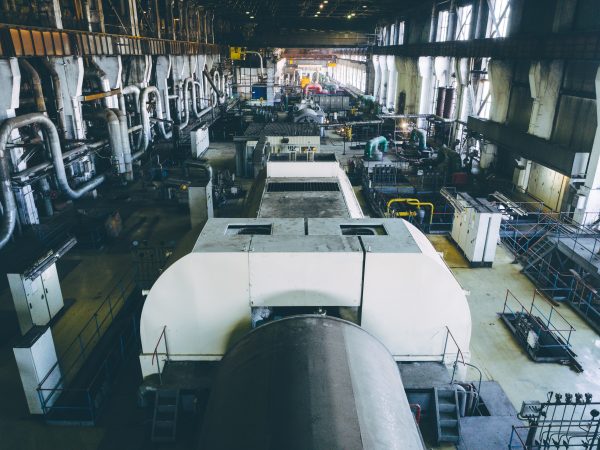
Furthermore, identify any processes which may create upset conditions. For example, when changing the hopper of a dust filter, does dust escape and accumulate outside of the process? Or are there any areas of the process which leak small amounts of dust which accumulate over time?
These external dust hazards must be identified in the DHA, and this may be used for future housekeeping efforts or process improvements.
